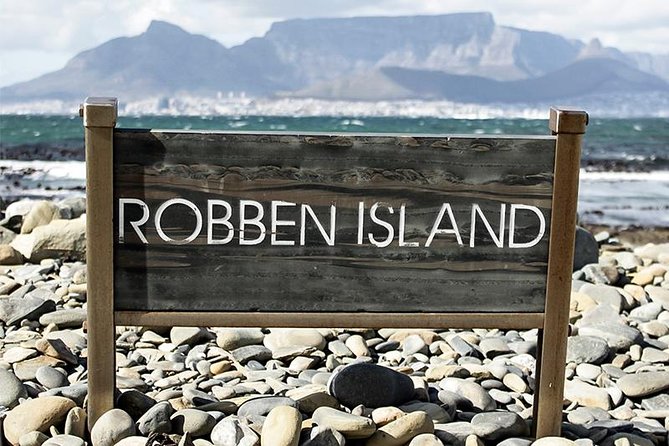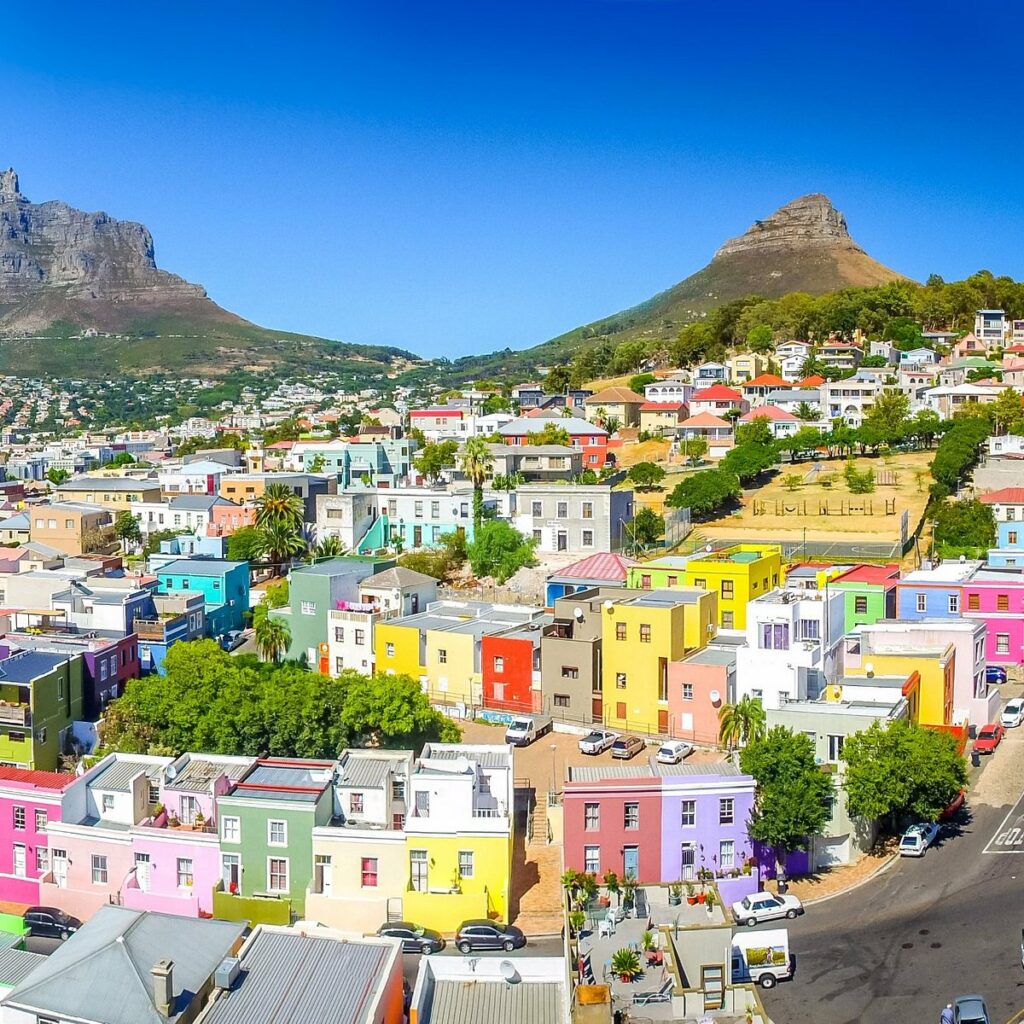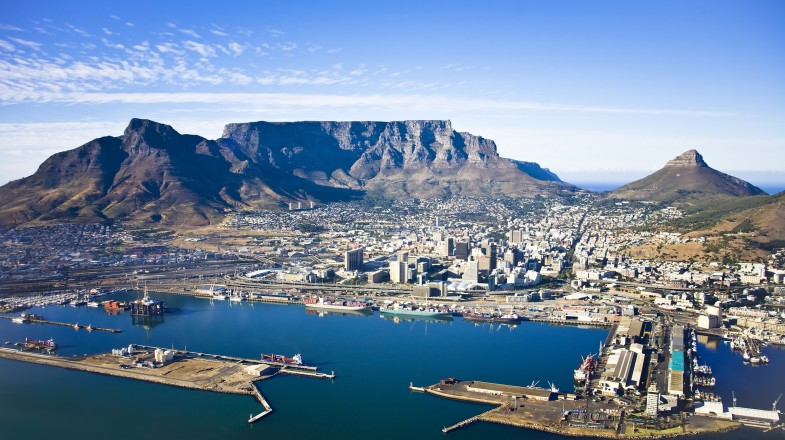When visiting Cape Town, there are several must-see attractions and activities that you should consider including in your itinerary. Here’s a suggested itinerary for a memorable trip to Cape Town:
DAY 1
Table Mountain: Start your trip with a visit to Table Mountain, one of Cape Town’s iconic landmarks. You can hike up the mountain or take the cableway for breathtaking views of the city and coastline.
V&A Waterfront: After descending from Table Mountain, head to the V&A Waterfront. This bustling waterfront area offers a variety of shops, restaurants, and entertainment options. Take a stroll along the harbor, enjoy a meal, or do some shopping.

DAY 2
Robben Island: Take a ferry to Robben Island, a UNESCO World Heritage Site known for its political history as the prison where Nelson Mandela was held. Take a guided tour to learn about South Africa’s apartheid history and Mandela’s fight for freedom.
Kirstenbosch National Botanical Garden: Spend the afternoon exploring Kirstenbosch, one of the world’s most beautiful botanical gardens. Enjoy a leisurely walk through the gardens, take in the stunning views of Table Mountain, and have a picnic on the lawn.

DAY 3
Cape Peninsula Tour: Embark on a full-day Cape Peninsula tour. Drive along the scenic coastal route, stopping at Boulders Beach to see the African penguin colony, Cape Point Nature Reserve for panoramic views, and the charming coastal towns of Simon’s Town and Hout Bay.

DAY 4
Cape Winelands: Take a day trip to the Cape Winelands, just outside of Cape Town. Visit historic wine estates in Stellenbosch, Franschhoek, or Paarl and indulge in wine tastings and cellar tours. Enjoy the picturesque landscapes and sample delicious local cuisine.

DAY 5
Cape of Good Hope: Head to the Cape of Good Hope, part of the Table Mountain National Park. Take a scenic drive along Chapman’s Peak, hike to the Cape Point lighthouse, and explore the rugged coastline. Keep an eye out for wildlife like baboons and ostriches.
Camps Bay Beach: End your day with a visit to Camps Bay Beach, one of Cape Town’s popular beaches. Relax on the golden sands, enjoy a refreshing swim in the Atlantic Ocean, and watch the beautiful sunset.

DAY 6
District Six Museum: Immerse yourself in the history of apartheid by visiting the District Six Museum. Learn about the forced removals and displacement of residents during apartheid and gain insights into the ongoing process of rebuilding the community.
Bo-Kaap: Explore the colorful neighborhood of Bo-Kaap, known for its vibrant houses and Cape Malay culture. Take a guided tour, visit the Bo-Kaap Museum, and sample traditional Cape Malay cuisine.
This itinerary provides a mix of natural beauty, cultural experiences, and historical sites, allowing you to make the most of your visit to Cape Town. Remember to check the availability and operating hours of attractions in advance and plan your days accordingly.

Cape Town has a rich and complex history that spans several centuries. Here’s an overview of the history of Cape Town:
Early History: The area where Cape Town is located has been inhabited for thousands of years by indigenous Khoisan peoples. They lived a hunter-gatherer lifestyle and were the original inhabitants of the region.
Dutch Settlement: In 1652, the Dutch East India Company established a supply station at the Cape of Good Hope, led by Jan van Riebeeck. The purpose of the settlement was to provide fresh produce and supplies for ships passing through on their way to the Dutch East Indies (present-day Indonesia). The settlement grew gradually and became known as Cape Town.
British Rule: In 1795, during the French Revolutionary Wars, the British seized Cape Town from the Dutch to prevent it from falling into French hands. The British officially took control in 1806. British rule brought significant changes to Cape Town, including the abolition of slavery in 1834 and the introduction of British governance and legal systems.
The Apartheid Era: In 1948, the National Party came to power in South Africa and implemented a system of racial segregation known as apartheid. Cape Town, like the rest of the country, was deeply affected by apartheid policies, with racial discrimination, forced removals, and the creation of racially segregated neighborhoods.
Resistance and the End of Apartheid: Cape Town played a significant role in the struggle against apartheid. The city saw numerous protests, demonstrations, and acts of resistance by various anti-apartheid activists and organizations. One of the most prominent figures in this struggle was Nelson Mandela, who was imprisoned on Robben Island, just off the coast of Cape Town, for 18 years. Mandela’s release in 1990 and the subsequent negotiations led to the dismantling of apartheid and the first democratic elections in South Africa in 1994.
Post-Apartheid Cape Town: Since the end of apartheid, Cape Town has experienced significant development and transformation. The city has become a popular tourist destination, known for its natural beauty, diverse culture, and historical landmarks. However, challenges such as inequality, poverty, and urban sprawl persist, highlighting the ongoing complexities of the city’s history and its present-day realities.
Cape Town’s history reflects a complex interplay of indigenous cultures, colonialism, slavery, segregation, and the struggle for freedom. Understanding this history provides important context for appreciating the diverse and vibrant city that Cape Town is today.




